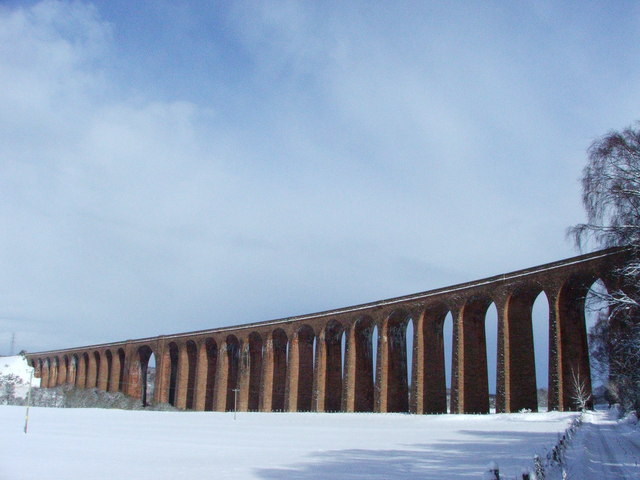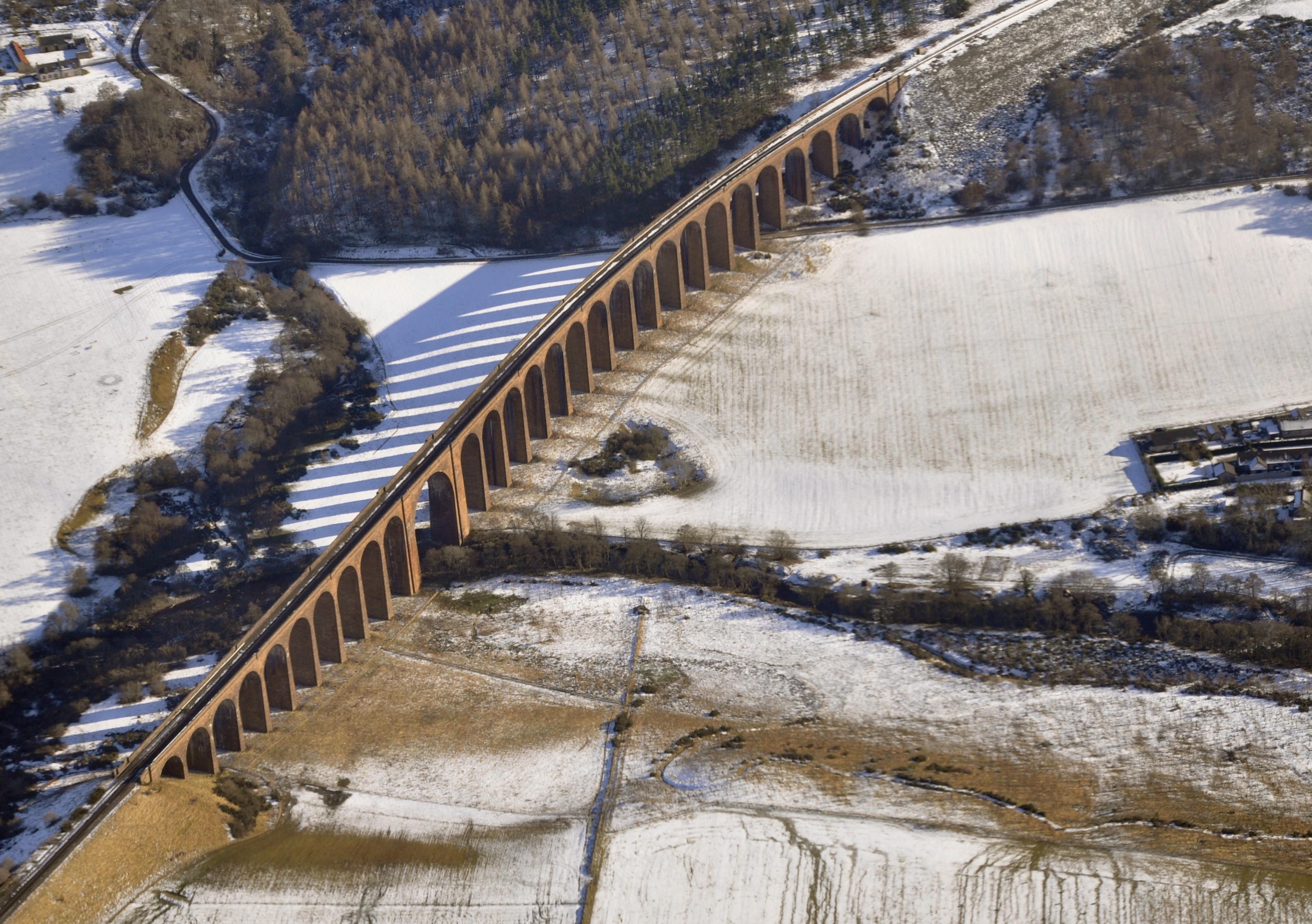Culloden Viaduct on:
[Wikipedia]
[Google]
[Amazon]
 The Culloden Viaduct (known variously as the Nairn Viaduct, Culloden Moor Viaduct, or Clava Viaduct) is the longest masonry railway viaduct in Scotland. It carries the
The Culloden Viaduct (known variously as the Nairn Viaduct, Culloden Moor Viaduct, or Clava Viaduct) is the longest masonry railway viaduct in Scotland. It carries the 
 The Culloden Viaduct (known variously as the Nairn Viaduct, Culloden Moor Viaduct, or Clava Viaduct) is the longest masonry railway viaduct in Scotland. It carries the
The Culloden Viaduct (known variously as the Nairn Viaduct, Culloden Moor Viaduct, or Clava Viaduct) is the longest masonry railway viaduct in Scotland. It carries the Highland Main Line
The Highland Main Line is a railway line in Scotland. It is long and runs through the central Scottish Highlands, mainly following the route of the A9 road (Scotland), A9, and linking a series of small towns and villages with Perth, Scotland, ...
, to the east of the city of Inverness
Inverness (; ; from the , meaning "Mouth of the River Ness") is a city in the Scottish Highlands, having been granted city status in 2000. It is the administrative centre for The Highland Council and is regarded as the capital of the Highland ...
, in the County of Nairn
The County of Nairn, or Nairnshire, () is a historic county, registration county and lieutenancy area of Scotland. The county was named after Nairn, its only town. The county was used for local government until 1975 when the area was redesignat ...
and Highland
Highlands or uplands are areas of high elevation such as a mountainous region, elevated mountainous plateau or high hills. Generally, ''upland'' refers to a range of hills, typically from up to , while ''highland'' is usually reserved for range ...
council area of Scotland.

Design
Culloden Viaduct has 29 arches, making it the longest masonry viaduct in Scotland. It crosses theRiver Nairn
The River Nairn () is a 35 mile long river in the Scottish Highlands.
Etymology
The hydronym ''Nairn'' is Pictish language, Pictish in origin. The name may involve ''*Naverna'', of which the ultimate genesis is the Celtic languages, Celtic ro ...
and its valley. It is built from rubble and dressed with red-faced ashlar
Ashlar () is a cut and dressed rock (geology), stone, worked using a chisel to achieve a specific form, typically rectangular in shape. The term can also refer to a structure built from such stones.
Ashlar is the finest stone masonry unit, a ...
. The arch rings have tooled ashlar details. The arches are all semi-circular with a span except for the one crossing the river (between the 10th and 11th piers from the north) which has a span of . The total length of the viaduct is around . It curves at the south end to align with the hillside.Biddle, p. 729.
History
The viaduct was designed by Murdoch Paterson, the Highland Railway's chief engineer. It opened in 1898 as part of theInverness and Aviemore Direct Railway
The Inverness and Aviemore Direct Railway was a section of railway built by the Highland Railway to provide a shorter and more direct route between Inverness and Aviemore, carrying its main line traffic to Perth, Scotland, Perth and the south.
...
, which was built by the Highland Railway
The Highland Railway (HR) was one of the two smallest of the five major Scottish railway companies prior to the 1923 Grouping, operating north of Perth railway station, Scotland, Perth railway station in Scotland and serving the farthest north o ...
and is now part of the Highland Main Line
The Highland Main Line is a railway line in Scotland. It is long and runs through the central Scottish Highlands, mainly following the route of the A9 road (Scotland), A9, and linking a series of small towns and villages with Perth, Scotland, ...
. The railway previously took a more circuitous route via Forres
Forres (; ) is a town and former royal burgh in the north of Scotland on the County of Moray, Moray coast, approximately northeast of Inverness and west of Elgin, Moray, Elgin. Forres has been a winner of the Scotland in Bloom award on several ...
. It was one of the last major railway engineering works in Scotland.
Culloden Moor railway station was situated at the northern end of the viaduct, but the station was closed in the 1960s. Paterson died there in 1897, before the viaduct was complete. It was his last engineering project.McFetrich, p. 97.
The viaduct is a Category A listed building
In the United Kingdom, a listed building is a structure of particular architectural or historic interest deserving of special protection. Such buildings are placed on one of the four statutory lists maintained by Historic England in England, Hi ...
, a status which grants it legal protection, It was first listed on October 5, 1971. It is just east of the site of the Battle of Culloden
The Battle of Culloden took place on 16 April 1746, near Inverness in the Scottish Highlands. A Jacobite army under Charles Edward Stuart was decisively defeated by a British government force commanded by the Duke of Cumberland, thereby endi ...
(1746).Yee, p. 49.
See also
* the Balnuaran of Clava cairns lie just to the west of the viaductReferences
Bibliography
* * *Citations
{{coord, 57.4780, N, 4.0627, W, type:landmark, display=title Bridges completed in 1898 Railway bridges in Scotland Category A listed buildings in Highland (council area) Bridges in Highland (council area) Listed bridges in Scotland Viaducts in Scotland 1898 establishments in Scotland